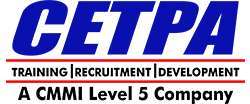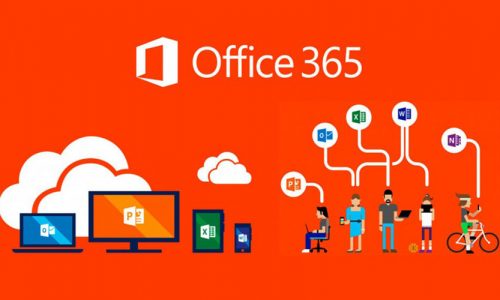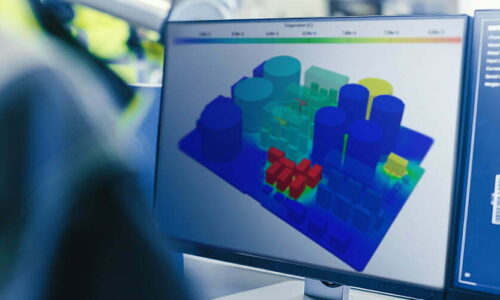RIA and HTML5 Training Institute in Delhi NCR

WHAT ARE RIA AND HTML5?
RIA or Rich Internet Application is a web application that is designed to exhibit the features and functions similar to the desktop application features. In simple terms it is about increasing the richness of experience to the user.
This can be done by making the software more natural, more connected, more alive, more interactive and more responsive. The art of creating user interface applications which closely model the natural world is known as Rich Internet Applications.
The major applications of RIA are found in:
- Browser based gaming.
- Applications that require access to video capture.
HTML5 is the latest version of HTML. It is a core technology markup language of the internet. It is used for restructuring and presenting content on the World Wide Web.
Some features of the HTML5 which can be used by the developers are:
- Web Workers
- Video
- Canvas
- Application Caches
- Geo location
No plug-ins are required for the video or codec hence it is user friendly.
HISTORY OF RIA & HTML5
Macromedia (merged into adobe) introduced the term “Rich Internet Application” in white paper in 2002. The concept also existed under various names such as:
- Remote Scripting by Microsoft,
- Rich Web Applications, etc.
In the case of HTML5, The WHATWG began working on the new standard in around 2004 and at that time W3C was focusing on XHTML2.0. W3C (World Wide Consortium) and WHATWG (Web Hypertext Application Technology Working Group) are currently working into the development of HTML5.
INDUSTRY DEMANDS AND CAREER SCOPE OF HTML5 AND RIA
Since, RIA and HTML5 are considered as a light weighted technology therefore it is used extensively by the design and development companies. The quality of these technologies is supported by every browser which makes it a highly efficient and demanding technology. Lots of innovative and light weight web sites are coming into existence, therefore large companies keep an eye to the skilled and competitive individual to give them employment and diverse job opportunities to prove themselves.
The professionals can enter into this sector as UI developer (User Interface) and can climb the ladder of success. Since games are also designed and developed using HTML5, the professionals can also think of joining as the game developer. The Industry offers excellent pay packages to the deserving professionals. Therefore, students having the passion to excel in the industry, thriving on innovation and development should think seriously on joining 6 months internship program or vocational training courses from a reputed training company like CETPA which is highly experienced in training students in “High end Technologies”.
STEPS TO LEARN RIA AND HTML5
There are certain proven steps devised by the experts that can make learning of RIA and HTML5 very easy.
- Since HTML5 is a combination of HTML4, CSS and Java. Therefore, basic knowledge of HTML4 and CSS will be very beneficial.
- The basic concept of web designing should be good.
- Students should know how to work on Java Script and handle Java Queries.
- Creativity plays a vital role, students should think out of the box while designing world class designs
These are some proved strategies which will be highly beneficial if implemented in a coordinated manner.
EXPERTISE OF CETPA IN RIA & HTML5
CETPA is an ISO 9001:2015 certified company, and is the market leader in “high end technology” training. Hence, it is a great opportunity for students to join the summer training programs for 4/6 weeks in RIA and HTML5 as it will fulfil the student’s urge of learning advanced web designing. CETPA branches offers the best RIA and HTML5 training to engineering students in cities of India like: Roorkee, Noida, Lucknow and Dehradun. Also, CETPA in Delhi-NCR is the eminent training school of Delhi, providing learning and Certification of 50+ technologies.
The company has the experience of training the students for over 12 years in this technology, so students should rely on the experts. Further it has certain added advantages as compared to other companies:
- The company has its own RIA Platform named as “RIA.cetpadevelopment.com” to promote RIA.
- Intellectual discussions among the trainers and students to discuss about innovative projects.
- Genuine and revised course material.
- Student and trainer ratio is balanced hence proper attention is given to each student.
- Placement assistance in top companies.
- Expert trainers for giving practical industrial training.
There is nothing as rewarding as the education and the knowledge of an individual, so students should think about gathering quality knowledge. And to gather quality knowledge, they must think of CETPA as they will get the required environment for learning which will help them to achieve success. Short term course structured by CETPA not only facilitates degree pursuing students but also working employers to expertise in specific technology in petite time.
TUTORIALS AND LEARNING RESOURCES
Best learning of the technology help the students with advance and proficient knowledge of technology. Learning never ends and it always help the students to enhance their knowledge. These are some links providing the guidance of CREO:
COMPANIES USING RIA AND HTML5
HTML5 is called as the slayer of all the technologies as it offers more features than Silver light, Ajax, WPF. Therefore, all innovative companies are implementing the use of RIA and HTML5 on a large to transform the experience of web browsing. Some prominent companies are:
- Accenture
- Chetu India
- Mass software solutions
- Digital arts
- Techno soft Services.
These companies are specialized in design and development and also require skilled professionals to maintain their web service standard. Hence, employment opportunities are great for the young professionals to build their career in these companies.
CETPA PLACEMENT RECORD
CETPA is the preferred option for the students as it is the leader in offering placement to the students. Many foreigner students from diverse countries including Nigeria, USA, Bhutan, Bangladesh and more join CETPA to enhance their learning and have intellectual environment that benefits them to bag huge number of job prospects. It has a dedicated placement wing with eminent counsellors which provide good network of companies such as:
- Kites Techno world
- Next G Exuberant etc (to name a few…)
Since CETPA facilitates effective project guidance after the RIA and HTML5 training, the students gain practical experience which helps them in placements.
Further due to enhanced technical and behavioural skills, CETPA students are preferred by the MNCs. Since CETPA facilitates the schedule of project work after the training, the students gain practical experience which helps them in placements. Please visit the link for more information on placements. Click Here
FAQ
INTRODUCTION TO .NET
- What is Microsoft .NET
- History of .NET
- Origin of .NET
- Usages of .Net
- D.N.A. Architecture
- Dot NET Architecture and Its Type
- One Tier
- Two Tier
- Three Tier
- N-Tier
Lab
- How to work with IDE on Visual studio and their Tools
- Implement of Adding numbers on IDE
THE COMMON LANGUAGE RUNTIME (C.L.R.)
- CLR Architecture and Services
- The .Net Intermediate Language (IL)
- Just- In- Time Compilation and CLS
- Disassembling .Net Application to IL
- Strict Type Checking
Lab
- Table Prints On Windows application
- Pattern printing on windows
SYNTAX & DATA TYPES (LANGUAGE FUNDAMENTAL)
- Data type and Control Constructs
- Value and Reference Types
- Declaring and Initializing Variables
- Unicode Characters and Strings C.T.S Type
- Implicitly Typed Local Variables
- Conditional Syntax
- C# Operator
- Looping Syntax
- Structure
Lab
- Calculator lab
FUNCTION AND ITS TYPES
- What is Function?
- Define the Advantage of Function
- Define the Declaration of Function and Its Syntax
- Types of function
- Call by Value
- Call by Reference
- Call by Address
- Call by prams
- Use of function in layered architecture
Lab
- Tick Tock Game
- Repetition of calculator lab using function
ARRAY & STRING
- Arrays in General
- Declaring of different type Arrays
- Initializing Arrays
- Resizing array
- Accessing element of different type Array Members
- Arrays of Objects
- Structure type array
- Using foreach with Arrays
- Understanding System. String class and its various operations
Lab
- Customer Management system (using array with structure)
OOPS (PART-1)
- Class & Object Creation
- Describe the Advantage of Class and Object
- Types Of classes…
- What is this keyword? Use of this keyword…
- Define Property
- Define Properties types
- Define Constructor and destructor
- Type of Constructor
- Default Constructor
- Parameterized Constructor
- Copy constructor
- Static Constructor
- Private Constructor
- Constructor overloading
- The Memory Allocation with New Keyword
- Invoking Property and Methods
Lab:
- Practical Implementation with Default, parameterized,copy constructor
- Customer Management system(Two tier Architecture:- STATIC DATA)
- Customer Management system(Two tier Architecture:- DYNAMIC DATA WITH ARRAY)
OOPS CONCEPTS (PART-2)
INHERITANCE
- What is inheritance and its Advantages
- Implementing Inheritance Hierarchies
- Inheritance with constructor and Its working
- Type of inheritance
- Class Access Modifiers
- Describe the base keyword
Lab:
- Practical implementation of Inheritance lab with class access Modifiers
- Practical implementation of constructor with inheritance
POLYMORPHISM
- What is polymorphism and its Advantage
- Type of Polymorphism
- Method Overloading
- Method Overriding
- Operator Overloading
- Run time polymorphism
- Method hiding
Lab:
- Practical implementation of method overloading, method overriding
- Practical implementation of operator overloading and method hiding
- Package Management Lab (Two Tier Architecture)
ENCAPSULATION AND (BOXING AND UNBOXING)
- Implement of encapsulation
- Property with class
- Define the boxing and unboxing
- Define the Up-casting and Down-casting
Lab
- Practical Implementation of encapsulation
- Practical implementation of boxing and unboxing and Downcasting and up casting
EVALUATION OF STATIC KEYWORD
- What are static keyword and its advantage?
- Define static Data type
- Describe the static function and its use
- Describe the static constructor
- What is the private constructor
- Use of Private constructor in singleton class
Lab:
- Practical implementation of static method and class
- Practical implementation of static constructor
- Practical implementation of private constructor with singleton Class
ABSTRACTION AND INTERFACE
- What is abstraction and its advantage
- Describe between abstract and no abstract method
- What is Interface and why we use it.
- Describe the Advantage of interface and its implementation
- Difference between abstract class and interface
Lab:
- Practical implementation of the abstract class and interface
- Practical Implementation of Implicit and explicit interface
INDEXER
- What is the indexer?
- Describe the indexer advantage?
Lab:
- Practical implementation of indexer
EXCEPTION HANDLING
- What is exception handling
- Means of Error and Exceptions
- What is the Difference between exception and error
- Describe the advantage of exception handling
- Describe the type of exception
- Describe the Try, Catch and Finally Block with Examples
- Handling Multiple Exception
- Throw Exception on Request User Defined Exception
Lab
- Practical Implement Of Expectation Handling And Describe Try, Catch, And Finally
- Practical Implementation Of User Define Exception Handling
DELEGATES AND ITS TYPE
- What is Delegate?
- Type of Delegate
- Single cast Delegate
- Multicast Delegate
- Define the covariance and contra-variance in Delegate
- What is anonymous method
Lab
- Practical implementation of Delegate and its type
- Practical implementation of covariance and contravariance
Events
- What is Events?
- What is events model
- Creation of event with Delegate
- Understanding of events like button click and text change etc
- Dynamic generation of controls in from
- Event writing of Dynamic control
Lab
- Practical implementation of dynamic control
- Create a calculator using Events (No Drag and Drop any controls form the Toolbox)
MULTITHREADING
- Understanding Thread, Process and Task
- Understanding Multithreading, Multiprocessing and Multitasking
- Working with Thread Class
- Thread State
- Thread Priority
- Thread Pool
- Thread Synchronization
- Inter-Thread Communication
Lab
- Understand thread synchronization
COLLECTION CLASSES
- Array list
- Hash table
- Stack
- Queue
- Sorted List
- Name value Collection
- Dictionary Entry structure
- Interfaces
- ICollection, IList, IEnumerable, IEnumerator, IClonalable, IComparable
Lab
- Practical Implementation of collection
I/O OPERATIONS WITH FILE SYSTEMS
- File and Directory Class
- Marshal Classes, File Info and Directory Info
- Path Class
- Drive Info Class
- Stream Object with Files: Stream Reader, Stream Writer
- File Stream and Memory Stream
Lab
- Practical implementation of I/O operation with File systems
REFLECTION
- System. Reflection namespace
- Core reflection classes Accessing assembly through reflection
- Method info
- Member info
- Property info
- Invoking methods and property and runtime
- Reflection on shared assembly
Lab
- Practical Implementation of Reflection
INTRODUCTION TO ADO.NET
- How ADO.NET works and how it differs from ADO?
- Evolution of ADO to ADO.NET
- What is Connected and Disconnected architecture
- Connection Object
- Command Object
ADO.NET? AND IT’S CONNECTED ARCHITECTURE
- Connection Object
- Command Object
- Execute Non Query
- Execute Scalar
- Execute Reader
- Reading Data in Connected Environment
- Moving and Accessing Value of Record
- Execute Reader
Lab
- Practical implementation of Connected Architecture
DISCONNECTED ARCHITECTURE
- Creating Tables in Dataset
- Data Adapter Object
- Data Column
- Data Row
- Data Table
- Updating, Inserting and Modification in Data Table
- Saving Changes into Data Base using Command Builder
- Working With Command and Connection
Lab
- Practical implementation of Disconnected architecture
- Disconnected mode with Dataset Controls
DATAGRIDVIEW & DATA BINDING
- Row State Filter and Sort Property
- Update records via a Datagridview
- Insert records via a Datagridview
- Delete records via a Datagridview
Lab
- Practical implementation of how to bind the connected and disconnected in DATAGRIDVIEW
THREE TIER ARCHITECTURE
Describe the All Layers
- Presentation layers
- Business logic layers
- Data Access layers
Lab
- Implementation of Three architecture
- Implementation of three architecture with DLL(class library)
TRANSACTION
- Introduction of Transaction (ACID)
- Transaction Class
- Method and Property Commit and Rollback
MIRCOSOFT SQL SERVER
- Create databases and database files
- Create data types and tables
- SQL Commands (DDL,DML,DCL,DQL)
- SQL Data Types Numeric Data type, Character Strings, binary, money etc.
- SQL Constraints NOT NULL, unique, check, PRIMARY Key, FOREIGN Key, Composite key, Candidate Key etc.
- SQL Syntax INSERT, DELETE, UPDATE, SELECT, ALTER, Drop, Truncate etc.
- Sql clause TOP, WHERE, AND/OR/IN/BETWEEN, LIKE, GROUP BY, ORDER BY, Count, Having, Unions, intersect, Except etc.
- Sql join
- Inner join
- Left Join
- Right Join
- Self Join
Lab
- Practical implementation of All join
Views
- What is view
- Describe the view and its advantage
- Describe the view and its Types
Lab
- Practical implementation of views
- Practical implementation of views type on sql server
Clustered And Nonclustered Index In Sql Server
Stored Procedures And Function In Sql
- What is stored procedures and Function
- Advantage and Disadvantage of stored procedure and Function
- Implementation of Stored procedures and function
- Describe the functions and its All types
- Difference between stored procedures and Function
Lab
- Practical implementation of stored procedures
- Practical implementation of functions
SQL SERVER TRIGGERS
- What is triggers
- Describe the advantage and Disadvantage of trigger
- Describe the Types of triggers in sql server
Lab
- Practical Implementation of triggers
- Practical implementation of triggers of after and before
CURSOR AND INDEXER
- What is the cursor
- Describe the advantage of cursor
- Describe the indexer
- Describe the indexer types
Lab
- Practical implementation of cursor and indexer
WEB DESIGNING CONTENTS
HTML (HYPERTEXT MARKUP LANGUAGE)
- What is html?
- Describe the advantage and Disadvantage of HTML
- History of HTML and Its invention
- Type of IDE(integrated Development Environment) of HTML
- Understanding & using HTML
- HTML Headings, Paragraph, Comment
- HTML Formatting Elements
- HTML From controls
Lab
- Practical implementation of From Controls in HTML Page
- Practical implementation of registration Form of Clients side HTML controls
CASCADING STYLE SHEET
- What is CSS? Define the advantage of CSS
- Describe the Type OF CSS
- Describe the Pseudo Class and Combination Elements
- Creating style sheet
- Apply Style Sheet
- Creating Rules
- Creating Elements setting
JQUERY
- Jquery Overview
- Jquery Basic
- Jquery Selector
- Jquery Dom
- Jquery Css
- Jquery Event
XML
- Introduction of XML
- XML Documentation structure
- WFF Format of XML
- Parsers DOM and SAX
- XML classes
- Reading and writing XML file
ASP .NET INTRODUCTION TO WEB FORM
- What is the Web Application
- Need Of Web Application
- What Is Asp And Asp.Net
- Describe The Advantage Of Asp.Net
- Http Protocol
- Static And Dynamic Page
- Concept Working Of IIS And Browser
- Differences Between ASP And Asp.Net
SERVER PAGES USING ASP.NET
- Creating sever pages
- Architecture of handling request
- In Web server
- Http request object
- Http response object
- Understanding post back
Lab
- Practical implementation of Request and Response objects in Asp.Net
UNDERSTANDING PAGE LIFE CYCLE
- Understanding of Application Life Cycle
- Page Life-cycle Stages
- Life-cycle Events
- Auto event wireup
- Tracing and debugging asp.net pages
Lab
- Practical implementation of page life cycle
WEB FORM CONTROL
- Textbox
- Check Box
- List Box
- Dropdown List Control
- Add Rotator Control
- File Upload Control
- Multi View Control
- Login Control
- Image control
- Radio button contro
Lab
- Practical implementation of registration page
- Practical implementation of login page and welcome
- Practical implementation of integration of all above page
SERVER CONTROL FORM VALIDATION
- What is validation and describe the Advantage of validation.
- Implementation of Client and Server Side Validation
- Use Control to Validate Property
- Types of server side validation?
- Required Field Validator Controls
- Range Field Validator Controls
- Regular Expression Field Validator Controls
- Compare Field Validator Controls
- Custom Validator Control
- Working with Validation Summary
Lab
- Practical implementation of all validation in Pervious Registration page lab
MASTER PAGES
- What is the master page in asp.net
- Introduction and Need of Master Page
- Creating a Master Page
- Default Contents and how to with content place holder
- Master page with CSS and table layout
- How to integrate nested master page
- How to integrate html and css template to master page
Lab
- Practical implementation of master and nested master page in asp.net
STATE MANAGEMENT
- What are state management and its advantage?
- Type of State management technique in asp.net.
- Client side State Management
- Http Cookies
- Persistence cookie
- Non-persistence cookie
- Query String Method
- View State
- Hidden Field
- Server Side State Management
- Http Session
- Http Application
Lab
- Practical implementation with all state management technique in asp.net
- Practical implementation of Application state management technique with Global.asax
ASP.NET CACHING
- What is Caching and Its Advantage?
- What the Need of Caching, Type of caching
- Page output Caching
- Declarative output caching
- Time duration and location setting
- Parameter caching settings
- Page fragment Caching
- Time duration setting
- Parameter caching Setting
- Caching with HTTP Cache Policy Class
- Post Cache Substitution & Fragment
- Data Caching
- Managing Data into cache
Lab
- Practical implementation of caching with all its Types in asp.net
DATA BINDING SERVER CONTROLS
- Use of Data Binding Control
- Type of Data Binding Control (Formatted and Unformatted)
- Describe the Gird and Working with Grid View Control
- Working with all template Fields in Gird View
- Data binding with Grid View
- Describe the All events In Grid View
- Working with Column Collection
- Data binding with Grid View
- Working with Column Collection
- Using paging
- Sort
- Working with DataList Controls
- Working with template
- Working with DataList Events
- Working with Detail View and repeater controls
- Working with Form View Control
- Working with template
- Working with form view events
Lab
- Practical implementation of Gird View with Wizard Technique
- Practical implementation of Gird View with Code Technique
ASP.NET AJAX
- Introduction of AJAX
- Role of script manager
- Understanding and working with update panel
- Understanding and Working with Update progress control
- Understanding and Working with Timer control
- Creating AJAX enabled website
- Creating an AJAX enabled web service
Lab
- Practical implementation of AJAX Tool Kit
ASP.NET WEB SECURITY
- Windows
- Forms
- Passport
Lab
- Practical implementation of web security
WEB SERVICES
- Introduction of web services
- The SOAP architecture
- SOAP and Web Services
- SOAP Essentials
- Web Services attribute
- WSDL Documentations
- Disco and Disco Map file
- Transaction in web service
- Publishing a web service
- Consuming a Web service
Lab
- Practical implementation of Web Services and How Its Consume on Client Side
LINQ
INTRODUCTION
- Introduction of LINQ
- Understanding Automatic Properties
- Understanding Initializes
- Understanding Type Inference
- Understanding Anonymous Types
- Understanding Generics
- Understanding Lambda Expressions
- Understanding Extension Methods
Lab
- Practical implementation of Anonymous method and Delegate
LINQ to SQL
- Performing standard Database Commands with LINQ to SQL
- LINQ to Objects Versus LINQ to SQL
- Selecting with LINQ to SQL
- Inserting with LINQ to SQL
- Updating with LINQ to SQL
- Basics of LINQ Join with Lamda Expressions(Inner Join with Linq)
- Left Right Full Outer Join and Cross join with Linq to Sql
- Connectivity Linq with Sql Server 2008 without dbml context
- Different b/w method syntax and query syntax
- Using Order by, Group By keyword in LINQ to Sql
Lab
- Practical implementation of Insert, Delete, Update through linq to sql (through query expression and Lambda Expression)
- Practical implementation Group by, order by, like query
- Practical implementation of Joins in linq
- Practical implementation of Dbml Context in Linq
- Practical implementation of Raw to Sql in Linq
ENTITY FRAME WORK
- Entity Framework Introduction
- Object Oriented VS RDBMS
- What is ORM?
- Why you need ORM
- ORM Requirements checklist
- ORM solutions
- Entities
- Insert, Update and Delete
- The Entity Data Model
- The EDM as EF Core
- Exploring the XML
- Conceptual Model
- Logical (Storage Model)
- Mapping
- Code Generation
lab
- Practical implementation insert, delete and update with sql server database through entity framework
- Practical implementation Database First, Code first and model First techniques in Entity framework
WINDOWS COMMUNICATION FOUNDATION (W.C.F.)
- The role of W.C.F
- W.C.F project template
- Understanding WCF Addressing
- Understanding WCF Bindings
- Understanding WCF Contracts
- Understanding WCF Endpoint
- Composition of basic W.C.F
- Building a W.C.F service
- Hosting a W.C.F service
- Building a W.C.F client application
Lab
- Practical implementation WCF services consume on Client machine
- Practical implementation with end Points in WCF
- Practical implementation of services contract, data contract and message contract in WCF Techniques
WINDOWS PRESENTATION FOUNDATION (W.P.F.)
- What is WPF
- Goals, Benefits & Drawbacks First WPF Application
- Types of WPF Application (Windows Based and Browser Based)
- XAML – Extensible Application Markup Language.
- Content Models
- Brief Introduction to Expression Blend
- Text Controls
- TextBox, TextBlock, RichTextBox, PasswordBox
- List Controls
- Combo Box, ListBox, Menu, StatusBar, TabControl, Toolbar, TreeView, ListView
- General Controls
- Progress Bar, Image, Slider, ScrollBar, Rectangle, Ellipse, MediaElement
- DataGrid View
- Panels
- Border
- Canvas
- Grid
- Stack panel
- Wrap Panel
- WPF Data Binding
- WPF Drawing 2D
- WPF Animation
Lab
- Practical implementation of all panels in WPF
- Practical implementation of login and registration page in a WPF
MVC 3.0 & 4.0
- MVC Architecture
- Specifying a View
- Strongly typed views
- Using HTML Helper Methods
- Working with parameters
- Model-View-Controller and AS P.NET
- Routing Compared to URL Rewriting
- The Controller Class and Actions
- Understanding Routes and URL
- Working with Multiple Parameters
Lab
- Practical implementation model view and control in MVC
- Practical implementation of Creating a registration and Login page with ASPX view engine and razor View Engine in MVC
- Practical implementation of all type of validation in MVC
- Practical implementation of Strongly type view in MVC
Mode/Schedule of Training:
CETPA, The Best RIA and HTML5 Training Institute in Delhi NCR offers courses in following modes.| Delivery Mode | Location | Course Duration | Schedule (New Batch Starting) |
|---|---|---|---|
| Classroom Training (Regular/ Weekend Batch) | *Noida/ Lucknow *Dehradun /Roorkee | 4/6/12/24 weeks | New Batch Wednesday/ Saturday |
| *Instructor -Led Online Training | Online | 40/60 Hours | Every Saturday or as per the need |
| *Virtual Online Training | Online | 40/60 Hours | 24x7 Anytime |
| College Campus Training | India or Abroad | 40/60 Hours | As per Client’s need |
| Corporate Training (Fly a Trainer) | Training in India or Abroad | As per need | Customized Course Schedule |
5

RIA and HTML5 Training in Noida
Finally got placed in MNC after doing this course from Cetpa. It was my great experience with Cetpa for this technology.If in future i need some guidance or any industrial training will go with Cetpa Noida.
RIA and HTML5 Training in Noida
Finally got placed in MNC after doing this course from Cetpa. It was my great experience with Cetpa for this technology.If in future i need some guidance or any industrial training will go with Cetpa Noida.
Course Features
- Lectures 0
- Quizzes 0
- Duration 10 weeks
- Skill level All levels
- Students 0
- Assessments Yes







